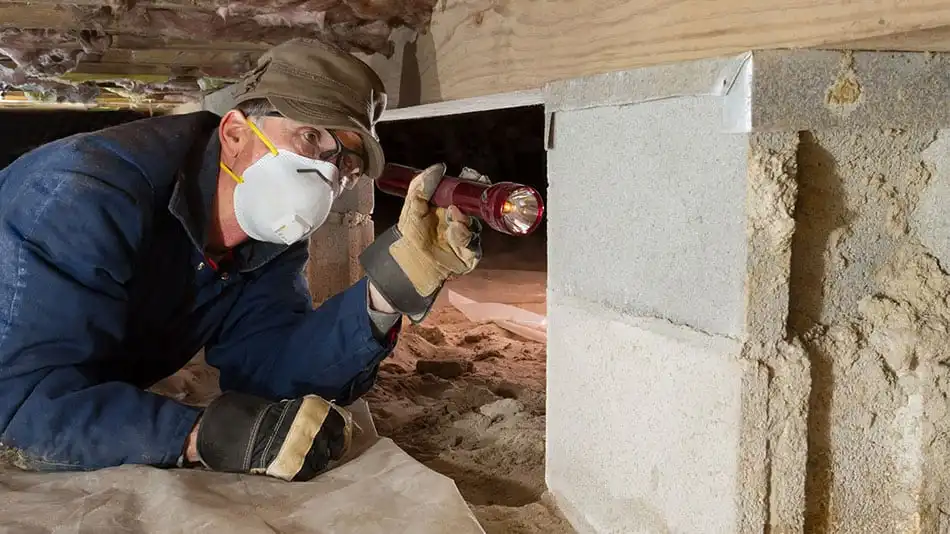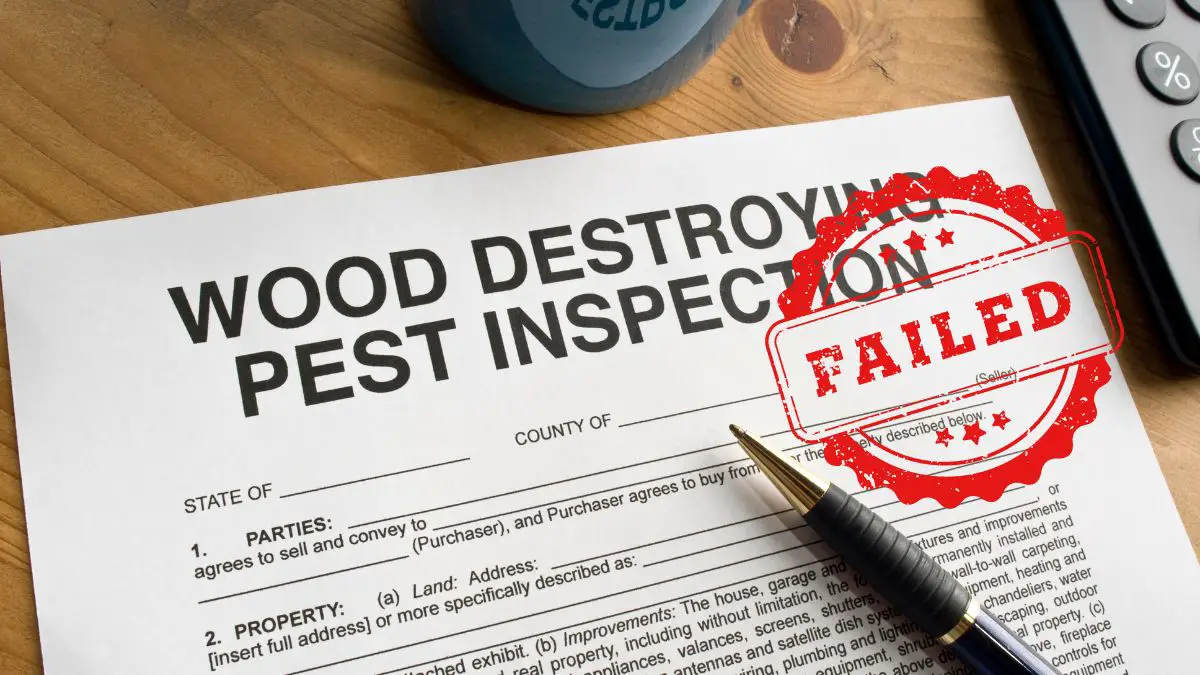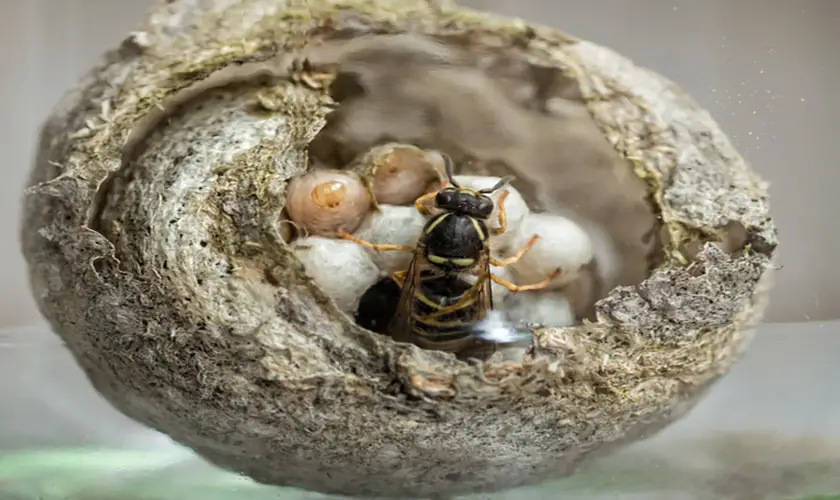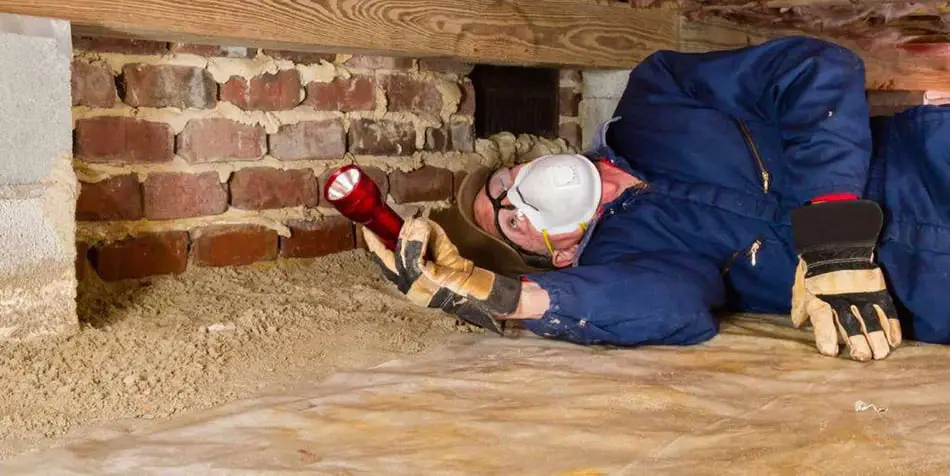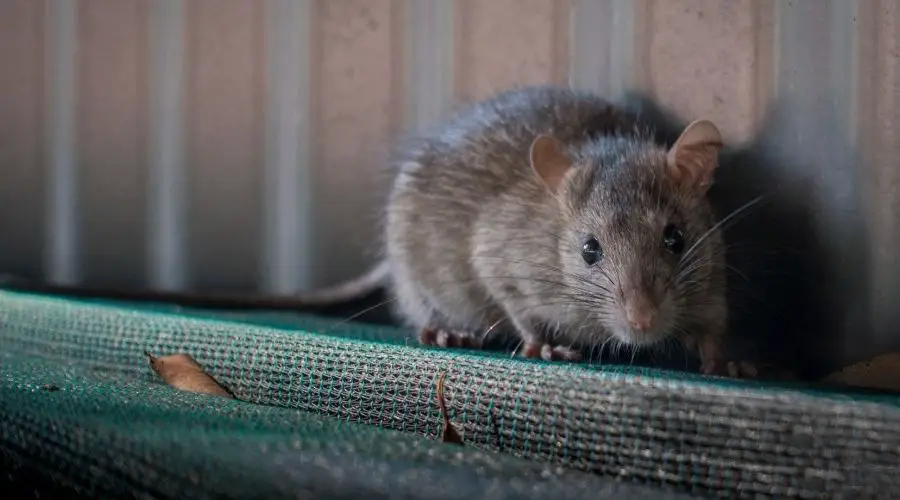
Rats are known to be one of the worst pests to have on your property. They smell horrible, damage your home and yard, and can come with various diseases. So it is no wonder that rats are one of the most common pests that professional exterminators are called to go and take care of. But how do pest control experts exactly exterminate these rats?
From sealing off entrance points to traps and fumigating your entire home, there are many steps professionals take to exterminate rats from your residence. These steps are taken to rid your home of the rat infestation you may be facing and set preventative measures to stop more rats from getting in.
If you face a single rat or 2 in your home, you can get away with dealing with it yourself. However, remember that rats can be very sneaky, and there can be more rats in your home than you are led to believe.
Get FREE quotes from licensed pest control technicians in your area today. Whether you need spraying for ants, roaches, spiders, ticks, mosquitos, or bed bugs, We Can Help! All technicians are screened, licensed, and insured.
As you continue to read, we will discuss the many steps professional exterminators use to kill rats and prevent them from coming back into your home.
Why Are Rats Problematic?
Firstly, let us talk about rats. Identifying the rat species is essential in deciding what to do regarding their extermination. Many species of rats can be a big problem. However, the most common rat you will see is your typical brown rat.
Brown rats usually weigh around 12 pounds for males and 9 ounces for females, but they can weigh up to a pound. They have short noses and ears that are 6 to 8 inches long. Their hair is shaggy and thick, and it comes in a variety of shades. Their tail is scale-like and shorter than their head and body combined. Brown rats are known for pulling their tails in places where roof rats are normal.
Since rats carry disease, getting rid of them as soon as possible is essential. According to the CDC, rodents transmit more than 35 pathogens worldwide.
Examples That Are Transmitted Directly By Rats In The United States:
- The plague
- Leptospirosis
- Rat-bite fever
- Food poisoning
Illnesses Transmitted Indirectly By Rats In The United States:
- Spotted fevers
- Typhus
- Relapsing fever
Rats, in addition to causing disease, often cause damage. The wiring of houses and cars was gnawed on and chewed over by them. Rats also gnaw on wood and other materials that come into contact with them, including paper, fabric, books, and insulation. They often create nests in crevices and enclosed spaces, suffocating sunlight and attracting more pests.
Brown rats, unlike mice and roof rats, tend to burrow rather than create dens or nests. Burrowing is popular around foundations, under litter, shrubbery, and concrete slabs. They usually build homes in basements or crawl spaces if they remain indoors. They can switch to attics and ceilings if their population becomes too high.
The worst part about rats is the speed at which they can reproduce. The extreme rate at which they can make litters is due to their speedy reproduction process and the rate at which they mature and can bear children.
Brown rat females can reproduce at just 3 to 5 months old. It has been observed that these rats can remate after just 18 hours of giving birth to their litter of approximately eight pups. Considering this, your average female brown rat can give birth to 50 to 60 young a year. So you can see just how fast those numbers can multiply.
What Do Rats Eat?
Some of the most common rats are roof rats and brown rats. Let us go more into detail about what they eat down below. This is important information if you are trying to capture them:
- Roof rats: These are omnivores, meaning they eat a wide variety of plants, including vegetables, nuts, seeds, and grocery products. Roof rats are also used to eat insects. Roof rats, like brown rats, waste much more food by contaminating it with feces and urine than by eating it.
- Brown rats: They are also omnivores, meaning they can eat almost everything that is found around garbage cans. Brown rats have also been known to feed on fish, chickens, rodents, insects, small reptiles, and amphibians. They can eat plants but tend to eat meat or meat-related waste.
Common Living Areas For Rats
- Roof rats: Like to nest in shrubs, bushes, and thick foliage above ground. Roof rats are commonly encountered in elevated or protected enclosures such as walls, shelves, attics, and false ceilings when they reach dwellings. Coastal and near-coastal regions, as well as port towns, are likely to have roof rats.
- Brown rats: Like to live in almost every area where humans live. Garbage dumps, sewers, and fields are among their preferred environments.
You can see brown rats scurrying about after dark in trash cans and other locations where human waste is found in much of our urban environments, searching for food.
Soil near building foundations, beneath woodpiles, and different rubble piles are good places for them to burrow. Brown rats will most likely survive in the basement or ground floor of a building if they infest it.
How Do Exterminators Get Rid Of Rats?
1. Inspection
The process exterminators use to rid your home of a rat infestation is not that long. The first thing these professionals will do is identify the true scope of the problem. Figuring out just how bad the infestation is and how many rats they will have to deal with is vital when deciding what to do and use.
During the inspection, the exterminators will be mainly out to identify the pest species in your home. This is primarily because rats and mice may look the same, but their behavior is vastly different and will require other techniques and tools to rid them from your home.
The second main advantage of an inspection is identifying where the pests mainly congregate and make their nests. Knowing where the rats live will be very important to the extermination process. This is because rats will generally use the same paths and runways when traveling throughout your home and property. This will also allow the exterminators to set up traps and baits in those places, making for some quick and early kills.
These burrows and paths often lead to the rat’s primary food sources. This will let you know what you need to move and clean up to reduce their activity and reduce the chances of attracting other rats to your property.
Even if you do not see the mice, it is pretty easy to know if you have them. Burrows, runways, grease marks, urine stains, mouse sounds, rodent odors (a heavy musky scent), gnaw marks, tail drags, footprints in muddy fields and fecal pellets are all signs of a rat infestation.
Brown rat fecal pellets have blunt ends which resemble raisins in appearance. The presence of chewed-out holes is another warning. Rat holes are 2 inches in diameter or more comprehensive.
Inspectors can search for a rat nest until a rat population has been confirmed. They may use a UV rodent tracker or another UV light source to detect urine, which glows under UV light, to help them with this mission.
If the inspector has trouble locating the rats’ nest, they can use a rodent-fluorescent-tracking powder. UV monitoring material is non-toxic and adheres to the bodies of rodents. An inspector will return a few days after placing the powder to understand the rats’ movements better.
2. Exclusion
The second step to a professional’s list is to exclude the area from other rats that potentially come in after being sealed in. There is no reason to exterminate the rats if more rats can move back in and take their place.
Exclusion entails obliterating the rats’ entrance points into a structure. If rats live outside, this might be enough to keep them away from your home. Half an inch or more holes will be sealed or filled with mesh, hardwire fabric, metal flashing, rubber, or other substances to keep the rats out. Mice may fit into holes more petite than a quarter-inch, so any holes more extensive than that should be sealed and secured.
Vents, openings near shelves, and wardrobe doors leading to the outside or crawl spaces are all common entry points into a home. Pipes, broken foundations, cracks around windows and doors, and missing screens or covers are also potential access points.
Another essential step in the exclusion process is eliminating as many of the rat’s food sources as possible. Unsealed food, pet food, and water kept out overnight, fruits and vegetables left outside the refrigerator, leaking water pipes and faucets, and open garbage or compost containers are also popular food sources for rats. Putting food away, repairing leakage, and closing waste bins are safe ways to keep rodents away from your house.
Once you have sufficiently taken care of the food sources, the rats rely on cleaning and sanitizing the area next up. All garbage will need to be taken out and cleaned up, and the yard around the site should be kept and maintained to reduce ground clutter. While doing this, it is advised to stay tight covers on all garbage cans and dumpsters.
3. Extermination
Once all previous steps have been completed successfully, the pest control professionals will address the rat population directly. As stated above, depending on the density of said population will determine what methods the exterminator will use.
Baits and Traps
Rat traps and bait traps are the most effective means of managing rats and are relatively inexpensive ways to deal with a rat outbreak. Setting the traps requires a specific procedure, and it can take several weeks for the traps to destroy any rats. Rats are naturally wary and brilliant creatures.
You or the specialist you employ may need to set tripped traps with bait around the rat runways and in areas where they feed before setting live rat traps. Rats need time to trust unfamiliar items, so this rat management system will fail if you do not have patience.
For various purposes, we advise against using glue traps to catch rats. The Centers for Disease Control and Prevention warns that captured mice can urinate, increasing the risk of disease transmission. Others believe glue traps are inhumane because they do not immediately destroy the rats. The glue traps may catch other animals and get stuck to dogs.
Live traps are another choice for catching rats if you don’t want them to die. However, the CDC advises against using live traps for the same purpose: glue traps cannot eradicate huge rat populations. If some alpha rats (extremely wary rats) escape the snap traps, they may be a good option.
Ultrasonic Technology
Ultrasonic technology is a chemical-free and humane way to get rid of rodents. It does not harm them; instead, it scares them away with noises inaudible to humans.
Although specialist ultrasonic products guarantee a decrease in rodent numbers, they do not ensure they will eliminate the animals. One of the most frequent errors people make about ultrasonic pest control is attempting to control infestations solely with ultrasonic equipment.
Many consider ultrasonic pest repellers a scam and ineffective at repelling rodents.
You can combine exclusion, hygiene procedures, baits, and traps with an ultrasound.
Rodenticides
Calling a nearby pest control firm in a more significant rat infestation is better and more efficient. Professionals may need to use rodenticides if traps and baits are not enough. Professionals understand how to work around these chemicals and use them in the best way possible.
Grains, beans, berries, and other foods containing chemicals toxic to rodents are considered rodenticides. The majority of them are used in bait traps and bait stations. Where other means of rat control have declined, or the population is very high, rodenticides are commonly used. Using several different rodenticides and procedures to spray and kill rats effectively would be wise.
Tracking Powder
Another strategy for eradicating massive rat colonies is to use tracking powder. Powders like DITRAC are only used under certain circumstances and by licensed suppliers. They cling to the paws and hair of rats and only touch the rat as it grooms. According to DIRAC’s maker, the powder is better used in regulated conditions where rodenticides have not performed well.
Fumigation
Pest control professionals can fumigate a rat population if tracking powder is not an option and bait has failed. Fumigation is the process of enclosing a building in a tent-like material and then filling it with a fumigant like Vikane.
Vikane fumigation kills rodents in a building almost instantly, although it leaves no trace after the building has been aired. Fumigation is a cost-effective and quick way to eliminate a toxic rat community in an entire house.
4. Cleaning Up
After the rats have been successfully exterminated, it is time to clean up the dead rat population and the tools used to eradicate them. According to the CDC, proper cleanup is essential to preventing the spread of disease.
The first thing that you should do after successful extermination is ventilation. During this process, the exterminators will be using cross ventilation to expedite the process, and the ventilation should last at least 30 minutes to an hour before reentering the residence.
The CDC also highly advises not to touch rats with your bare hands. This will allow the spread of disease to occur much more manageable and quickly. During the cleanup process, it is advised to use rubber, latex, vinyl, or other gloves when handling dead rats.
During the cleaning process after the extermination, the area must not be swept or vacuumed. This will stir up leftover dust, urine, and fecal matter, further spreading any potential diseases associated with rats. When cleaning up areas where rats were known to congregate, spray the areas with disinfectant or a mixture of bleach and water and let it soak for at least 5 minutes before starting the cleanup.
After the area has been soaked, clean up the spaces with paper towels and throw them away afterward. After cleaning up the urine and fecal matter, repeat the same process by disinfecting the area and whipping it down again after letting it soak.
For substantial infestations, OSHA and local health may require the professionals to be adequately outfitted with respiratory devices, gloves, overalls, and shoe coverings for the exterminators.
Final Thoughts
Rats can be very dangerous to come in contact with. With the number of diseases they can carry and the damage they can cause to your property, it is obvious why you would want to get rid of them promptly. While you can take care of the issue yourself, it may be wise to call the professionals to come and take care of it for you.
Get FREE quotes from licensed pest control technicians in your area today. Whether you need spraying for ants, roaches, spiders, ticks, mosquitos, or bed bugs, We Can Help! All technicians are screened, licensed, and insured.


